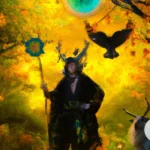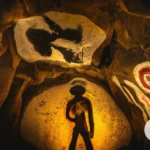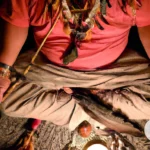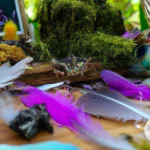Shrouded in mystery and ancient lore, shamanic traditions have long captured the imagination of people all over the world. While most people may associate shamanism with indigenous cultures, many might be surprised to learn that ancient Egypt also had a rich tradition of shamanic practices. The ancient Egyptians were deeply spiritual people who sought to connect with the divine through rituals, ceremonies, and other shamanic practices. In this article, we explore the fascinating world of shamanism in ancient Egypt, from the beliefs and practices to the tools and symbols used by shamans. Join us on a journey through time to learn more about this intriguing subject.
Shamanism in Ancient Egypt
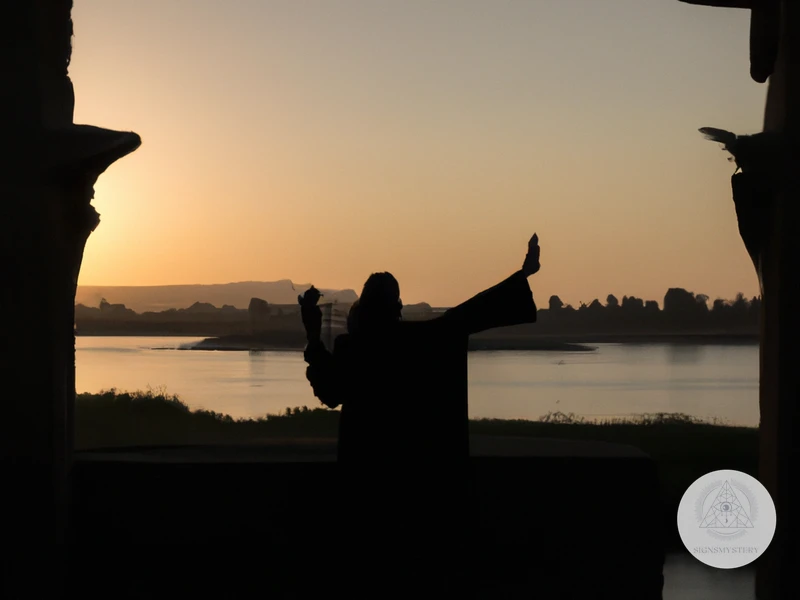
Shamanism in Ancient Egypt served as a diverse and complex system of beliefs and practices. Shamans were respected members of society who acted as intermediaries between the community and the spiritual realm. They used various techniques to achieve altered states of consciousness and connect with the divine, including music, dancing, and the use of plant medicine. Animal totems and spirit guides played a significant role in their rituals and allowed them to access different realms of existence. The Ankh, an ancient Egyptian symbol that represented “eternal life,” was also commonly used by shamans. The influence of prehistoric shamanism, as well as shamanism in indigenous cultures, is evident in the diverse practices of ancient Egypt’s shamanic traditions. Despite the decline of these practices in modern times, their legacy continues to influence contemporary spirituality globally, as seen in shamanic healing origins.
Beliefs and Practices
Shamanism was an integral part of Ancient Egyptian culture and was closely connected to their religious beliefs. The Shamans in Ancient Egypt were believed to have access to the spiritual world and had the ability to communicate with the Gods. They believed in the existence of multiple deities and spirits that could influence human affairs.
The Shamans believed that the spiritual world was comprised of three different levels: the upper world, the middle world, and the lower world. The upper world was associated with the Sun God, the middle world with humans, and the lower world with the dead and the underworld.
The Ancient Egyptians believed that the Shamans could receive messages from the spiritual world through visions and dreams. They used these messages to guide their communities and help them make important decisions.
Animal worship was also an important aspect of Ancient Egyptian Shamanism. The Shamans believed that every animal had its own unique spiritual essence and that by worshipping these animals, they could tap into their power. They believed that animals were capable of helping humans in times of need and that they could act as spiritual guides.
The Shamans in Ancient Egypt also practiced divination and were known to use a variety of divination tools such as tarot cards and crystal balls to communicate with the spiritual world. They also used music and dance to enter into a state of trance and connect with the spiritual realm.
The Ancient Egyptians also believed in the power of plant medicine and the use of sacred herbs to heal spiritual illnesses. They believed that certain plants had the ability to cure physical and mental ailments, and the Shamans would often prescribe specific herbs to their patients.
Shamanism in Ancient Egypt was an intricate and complex system of beliefs and practices that sought to connect humans with the spiritual world. Its legacy still lives on in modern spirituality and has influenced many different cultures across the world.
Shamanic healing has been practiced by many cultures throughout history, and the methods used by Shamans in Ancient Egypt bear many similarities to prehistoric shamanism and shamanism in indigenous cultures around the world.
Roles of Shamans
In Ancient Egypt, shamans played a key role in maintaining spiritual harmony. Through their knowledge and connection to the divine, they served as intermediaries between the physical and spiritual realms, assisting with healing, protection, and divination.
One of the primary roles of shamans was to perform healing ceremonies. They believed that illnesses were caused not only by physical factors but also by spiritual and emotional imbalances. Shamans would use their spiritual abilities to diagnose the root cause of an illness and then perform rituals to rebalance the individual’s energy.
Another important role of shamans was to provide protection and guidance. They would use talismans and amulets to protect individuals from negative energies and evil spirits. Additionally, shamans would provide guidance to individuals during important life events such as birth, marriage, and death. They would use their ability to commune with the divine to offer insight and support.
Shamans were also deeply involved in divination. They would use a variety of methods, including the interpretation of dreams, to communicate with the spiritual realm and gain insight into the future. By doing so, they could warn individuals of impending danger or provide guidance on important decisions.
Finally, Shamans played a key role in the preservation and transmission of knowledge. They were responsible for passing down their spiritual knowledge, including rituals, ceremonies, and beliefs, to the next generation. This ensured that the ancient shamanic traditions of Egypt survived for centuries.
The roles of shamans in Ancient Egypt were diverse and vital to the functioning of society. They acted as spiritual healers, protectors, and guides, while also being important sources of divination and knowledge transmission. Despite the passing of time, the influence of shamanic traditions can still be felt in modern Egypt.
Connection to the Divine
Shamanism in Ancient Egypt considered the connection to the divine to be an essential aspect of their practice. It was believed that the divine powers could provide guidance and support to the shamans in their healing and spiritual work.
The Netjeru: The Netjeru were the ancient Egyptian gods and goddesses. Shamans believed that they could call upon the Netjeru for help and guidance during their rituals and ceremonies. Each Netjeru had different strengths and weaknesses, and shamans would work with specific deities depending on their needs.
The Duat: The Duat was the Egyptian underworld, a realm of the dead and a place of transformation. Shamans believed that they could enter the Duat during their trance states to communicate with the dead and receive guidance from spirits.
The Ennead: The Ennead was a group of nine deities who were believed to have created the world. Shamans would often work with the Ennead during their rituals to connect with the forces of creation and gain a deeper understanding of the universe.
The Ka: The Ka was the Egyptian concept of the soul, which was believed to be a separate entity from the body. Shamans would work with the Ka during their rituals to help heal and strengthen the soul.
The Eye of Ra: The Eye of Ra was a powerful symbol of the ancient Egyptian sun god. Shamans believed that they could work with the Eye of Ra to gain clarity and insight into their spiritual work.
The connection to the divine was a crucial aspect of shamanic practice in Ancient Egypt. Shamans worked with a variety of gods, goddesses, and other spiritual forces to gain guidance and support in their work. By connecting with these higher powers, shamans were able to deepen their understanding of themselves and the universe around them.
Rituals and Ceremonies
The rituals and ceremonies practiced in ancient Egyptian shamanism were intricate and fascinating. Shamans utilized their connection to both the spiritual world and the natural world to perform ceremonies that would bring physical, emotional, and spiritual healing to their tribe. Animal totems and spirit guides were essential components of these rituals, as they were seen as powerful forces endowed with wisdom and capable of providing guidance. Music and dance, along with chanting and drumming, were also utilized in services to induce a trance-like state in both the shaman and the members of the tribe. Additionally, plant medicine and sacred herbs played a significant role in these ceremonies, as they were used to bring on altered states of consciousness and facilitate communication with spirits. The complexity and beauty of these ancient Egyptian rituals continue to captivate both spiritual and historical enthusiasts alike.
Animal Totems and Spirit Guides
Animal totems and spirit guides played a significant role in ancient Egyptian shamanism. These were animal spirits or energies that acted as guides and protectors for the living individuals. Shamans believed that animals had spirits that were wise and powerful, and each person had their own unique animal guide or totem that guided them through life. These totems were believed to be sacred and powerful and were often represented symbolically in various forms of artwork.
The animal totems and spirit guides were often discovered through visions or dreams induced by shamanic rituals. The shaman would experience a vision where an animal would appear and communicate with them. The animal would be seen as a symbol of a particular quality or trait that the shaman needed to harness for themselves or their clients. For example, a hawk may represent vision and clarity, while a lion represents bravery and strength.
In ancient Egypt, the most common animal totems were the ibis, the scarab beetle, the snake, the crocodile, and the cat. The ibis symbolized knowledge and wisdom, the scarab beetle represented rebirth and regeneration, the snake symbolized the cycle of life, and the cat was a protector and symbol of grace and agility.
When a shaman received a specific animal totem or spirit guide, they would often incorporate its symbolism into their practice. They might use these spirit animals in enchantments or wear jewelry fashioned after the animal in question to bring its power closer to them. They might also use totemic chants or songs that were passed down from generation to generation.
In modern times, animal totems and spirit guides still remain powerful guiding forces for many people, especially in neo-shamanic practices. People consult oracle card decks, visit shamanic practitioners, and engage in meditation and divine invocations in order to seek for guidance from their animal totems or spirit guides. The use of these totems continues to inspire awe and fascination and is rich in possible interpretational avenues.
Here are some examples of totems and their symbolic meanings:
| Totem Animal | Symbolic Meaning |
| Wolf | Intuition, loyalty, and guardianship |
| Bear | Strength, power, and transformation |
| Hawk | Clarity, vision, and higher perspective |
| Horse | Freedom, grace, and travel |
| Butterfly | Transformation, beauty, and embracing change |
Animal totems and spirit guides offer a unique and engaging way to connect with the divine and access our inner wisdom and guidance. Whether we seek to access ancient traditions or make our own, embracing the power of totems is a potent way to explore our own beings and the potential of our souls.
Use of Music and Dance
The use of music and dance was an essential part of shamanic rituals and ceremonies in ancient Egypt. The shamans believed that music and dance had the power to transport them and their followers to a higher state of consciousness, enabling them to communicate with the spiritual realm more effectively. The following are some of the musical instruments and dances that were used during shamanic practices:
| Instruments | Dances |
|---|---|
| Sistrum – a type of rattle that was shaken during shamanic ceremonies to evoke the goddesses Hathor and Bastet | Tutankhamun Dance – a ritual danced in honor of the god Osiris |
| Drums – used to create a trance-like state and to mimic the sound of the heart and womb | Isis Dance – celebrating the goddess Isis |
| Flutes – played during ceremonies that involved bird spirits | Horus Dance – invoking the god Horus |
The shamans also believed that different types of music had different effects on the body and spirit. For example, the sound of the sistrum was believed to have healing powers, while the beat of the drum was associated with grounding and stability. Additionally, the shamans often sang chants and incantations in order to invoke certain spirits and energies.
Dance was also an important aspect of shamanic practices. Different dances were performed for different purposes, such as to celebrate a particular deity or to embody the movements of a specific animal spirit. By dancing in a particular way, the shamans believed they could connect with the energy and essence of the spirit they were invoking.
Music and dance were an integral part of shamanism in ancient Egypt. They were used to create a sacred space, to evoke specific energies and spirits, and to transport the shaman and their followers to a higher plane of consciousness.
Plant Medicine and Sacred Herbs
Plant medicine and sacred herbs played an integral role in the shamanic traditions of Ancient Egypt. The use of plants as medicine and tools for spiritual healing was a common practice among the shamans of this ancient civilization. The ancient Egyptians believed that plants had powerful healing properties that could be harnessed in their healing rituals.
Various types of plants were used in these practices, including lotus, mandrake, juniper, and myrrh. Each plant had a unique purpose and was used for specific healing rituals. For example, lotus was used for its calming properties and was often used in ceremonies that involved meditation and relaxation. Mandrake, on the other hand, was believed to have mystical properties and was used in rituals to induce visions and connect with the spirit world.
One of the most common ways that shamans used plants in their practices was through incense. The smoke from burning certain herbs and resins was believed to purify the air and create an atmosphere that was conducive to spiritual healing. The ancient Egyptians also believed that the smoke from incense could carry their prayers and intentions to the divine realm.
Another important part of plant medicine and sacred herbs in Ancient Egyptian shamanism was the use of herbal remedies. Plants were used to treat a variety of physical and emotional ailments, such as headaches, stomach pains, and anxiety. Shamans would prepare herbal remedies by crushing and mixing various plants together to create a powerful healing blend.
The use of plant medicine and sacred herbs in Ancient Egyptian shamanism continues to be a part of modern spiritual practices. Many people today still seek out natural remedies for their ailments and use plant-based medicines to heal their bodies and connect with the spiritual world. The legacy of this ancient tradition lives on in contemporary efforts to preserve and honor the sacred plants of Ancient Egypt.
Tools and Symbols
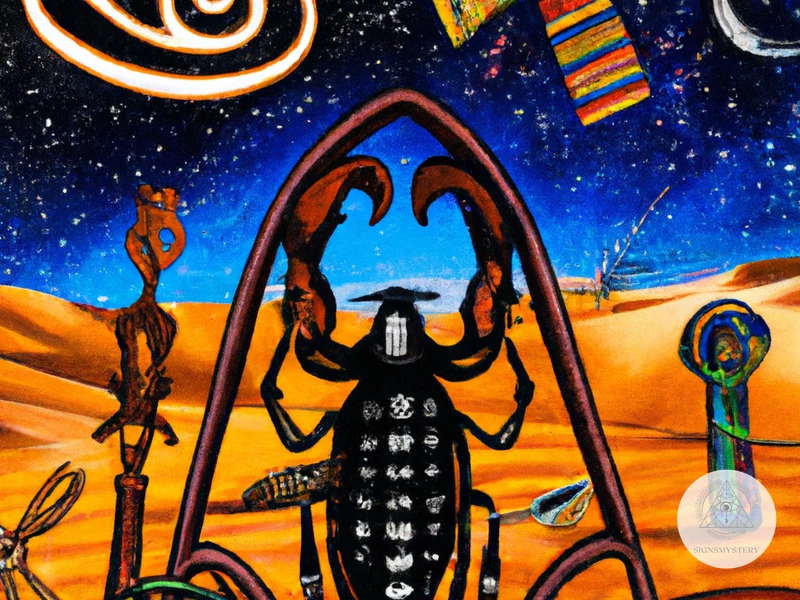
Throughout ancient Egyptian shamanic practices, tools and symbols played a crucial role in connecting shamans with the spiritual realm. One of the most well-known symbols is the ankh, representing eternal life and often held in depictions of gods and pharaohs. Shamans also used divination and oracle cards to interpret messages from the divine, with some of the earliest known examples dating back to the time of the Old Kingdom. Shamans donned masks and other shamanic accessories to channel the power of various deities, such as the falcon-headed Horus or the jackal-headed Anubis. These tools and symbols allowed shamans to tap into the power of the spiritual world and guide individuals on their personal journeys.
The Ankh and Other Sacred Symbols
The Ankh is one of the most well-known sacred symbols of ancient Egypt and was commonly used in shamanic rituals and ceremonies. It symbolizes the concept of eternal life and the union of male and female forces. The Ankh is shaped like a cross with a loop on the top and is often depicted being held by Egyptian gods and goddesses.
In shamanism, the Ankh is used as a channel for connecting with the divine and as a tool for healing. It is believed that the Ankh can be used to help one connect with their spiritual essence and establish a deeper connection with the universe.
Other sacred symbols utilized in ancient Egyptian shamanism include the Eye of Horus, the Scarab Beetle, and the Djed Pillar. The Eye of Horus is a symbol of healing and protection, while the Scarab Beetle represents rebirth and resurrection. The Djed Pillar is often associated with the god Osiris and represents stability and strength.
These symbols were not just viewed as images or representations, but were believed to have actual power and energy within them. Ancient Egyptian shamans would use these symbols in their practices to aid in their connection to the divine and to assist in the healing of their clients.
Today, many people still incorporate these symbols into their spiritual practices, whether it be through jewelry, art, or meditation. The use of these ancient symbols serves as a reminder of the timeless wisdom and teachings of the shamanic traditions of ancient Egypt.
Divination and Oracle Cards
Subscribe to Our Newsletter
Sign up to receive the latest news and updates.
Masks and Other Shamanic Accessories
Masks and other shamanic accessories were integral parts of Ancient Egyptian shamanism, and they played an essential role in many of the rituals and ceremonies. These shamanic tools were used to aid communication with the spiritual world, enhance the shaman’s abilities, and provide protection against harmful spirits and energies.
Among the most important shamanic accessories used in Ancient Egypt were masks. Shamans used a variety of masks for different purposes, such as channeling the power of specific deities or spirits, hiding their identity during rituals, and scaring away malevolent entities. Masks were often crafted from natural materials like wood, clay, and animal hides. Some masks were adorned with feathers, beads, and other decorative elements to amplify their power and symbolism.
Another essential shamanic accessory used in Ancient Egypt was the scepter. The scepter was a long, slender rod carried by shamans during rituals and ceremonies. It was believed to contain spiritual energy and could be used to direct and control the flow of this energy. Scepters were often adorned with symbols of power and religious significance, such as images of deities or hieroglyphs.
Shamans in Ancient Egypt also used amulets and talismans to provide additional protection against negative energies and spirits. Amulets were small charms crafted from various materials, such as precious stones or metals, and often featured symbols of protection and good fortune. Talismans were similar to amulets but were believed to contain more potent magical properties.
Other shamanic accessories used in Ancient Egypt included:
– Staves: Long staffs used to provide support during long ceremonies and to amplify the shaman’s energy and authority.
– Incense: Used to purify the ritual space and create an atmosphere conducive to spiritual communication.
– Crystals: Used for their ability to amplify spiritual energy and to aid in divination and other spiritual practices.
– Statuettes: Small figurines of deities and animals used to channel their power and symbolism.
Shamanic masks and other accessories played a vital role in Ancient Egyptian shamanism. These tools were used to enhance spiritual communication, provide protection, and amplify the shaman’s energy and authority. While some of these practices have been lost over time, many modern spiritual traditions still incorporate masks, talismans, and other shamanic accessories in their rituals and ceremonies.
Legacy and Modern Influences
The legacy of ancient Egyptian shamanism continues to influence modern spirituality in various ways. In Egypt today, there are still those practicing traditional shamanic techniques and passing down their knowledge to younger generations. Many modern spiritual practices incorporate aspects of ancient Egyptian shamanism, such as the use of sacred symbols and the belief in spirit guides. Additionally, shamanic practices and beliefs have influenced the development of other spiritual practices, such as Wicca and New Age spirituality. The preservation and understanding of these ancient traditions play a crucial role in our comprehension of the history of spirituality. It is a testament to the richness and complexity of human experience that these traditions persist and continue to shape contemporary spiritual practices.
- Legacy: The ancient Egyptian shamanic tradition has left a lasting influence on modern spirituality.
- Traditional Techniques: In Egypt, there are still those who practice traditional shamanic techniques and pass down their knowledge to younger generations.
- Spiritual Practices: Many modern spiritual practices incorporate aspects of ancient Egyptian shamanism, such as the use of sacred symbols and the belief in spirit guides.
- Influence on Other Spiritual Practices: Shamanic practices and beliefs have influenced the development of other spiritual practices, such as Wicca and New Age spirituality.
- Preservation: The preservation and understanding of these ancient traditions play a crucial role in our comprehension of the history of spirituality.
Shamanism in Contemporary Egypt
Shamanism has had a significant impact on contemporary Egypt, despite the fact that the practice was suppressed by various historical and political factors. In recent years, the practice has experienced a revival, and modern shamans are utilizing many of the same ritual and ceremonial techniques as the ancients.
One modern example of shamanism in Egypt is the KemeTones Cosmic Sound Healing group, which uses music and sound to facilitate healing and spiritual transformation. They incorporate ancient Egyptian deities and symbols into their practice, emphasizing the continuity of shamanic traditions through the ages.
Another modern shamanic practice in Egypt involves the use of plant medicine and psychedelic substances for healing and spiritual exploration. This practice is often done in small, private groups and is generally not advertised or widely known.
Despite the resurgence of shamanism in Egypt, the practice is still largely underground and often met with skepticism or outright hostility from mainstream society. However, there are efforts to preserve and promote the ancient traditions of shamanism in Egypt, and many modern shamans are working to keep the practice alive.
One such effort is the Shamanic Wisdom Summit, a virtual conference that brings together shamanic practitioners and leaders from around the world to discuss their experiences and promote greater understanding and appreciation for shamanic traditions.
Despite the challenges faced by shamanism in contemporary Egypt, the practice continues to inspire and transform those who practice it. As the ancient Egyptian proverb goes, “As above, so below; as within, so without.” The wisdom and magic of the shamans of ancient Egypt still resonate today, offering a glimpse into the mysteries of the universe and the power of the human spirit.
Influence on Modern Spirituality
Influence on Modern Spirituality:
The shamanic traditions of ancient Egypt have had a significant impact on modern spirituality. Many people today find inspiration in the ancient practices and beliefs, and incorporate them into their own spiritual practices. Here are some of the ways in which shamanism has influenced modern spirituality:
- Connection with Nature: One of the primary teachings of shamanism is the importance of a close relationship with the natural world. This concept has been adopted by many modern spiritual seekers, who recognize the value of honoring the earth and all living creatures.
- Healing: Shamanic practices often focus on healing, whether it be physical, emotional, or spiritual. This emphasis on healing has influenced many modern healing modalities, such as Reiki, acupuncture, and energy healing.
- Intuition and Inner Wisdom: Shamanism encourages individuals to tap into their own intuition and inner wisdom, rather than relying solely on external sources of knowledge. This idea has become popularized in the concept of “trusting your gut” or “following your intuition.”
- Cultural Exchange: The shamanic traditions of ancient Egypt have also served to open up a dialogue between different cultures and belief systems. Modern spiritual seekers are often drawn to incorporate aspects of different cultures into their practices, and shamanism provides a rich tapestry of beliefs and practices to draw from.
- Emphasis on Ceremony and Ritual: Shamanism places a strong emphasis on ceremony and ritual as a means of connecting with the divine. This emphasis has been adopted by many modern spiritual traditions, such as Wicca and Neo-Paganism, which use ritual and ceremony as a means of harnessing the power of the natural world.
The shamanic traditions of ancient Egypt have had a profound impact on modern spirituality. From a renewed connection with nature, to the emphasis on healing and inner wisdom, to the exchange of cultural ideas, shamanism has provided a rich source of inspiration for modern spiritual seekers.
Preserving Ancient Traditions
One of the most important aspects of shamanic traditions in ancient Egypt is the need to preserve these practices for future generations. The Egyptian culture is rich with symbolism and spirituality, and many of these practices have been lost or forgotten over time. However, efforts are being made to preserve these traditions and pass them on to the next generation.
One way to preserve these traditions is through oral history and storytelling. Storytelling has long been an important part of Egyptian culture, and many of these stories are deeply rooted in shamanic traditions. By sharing these stories with younger generations, they can gain a better understanding of their cultural heritage and the importance of shamanic practices in their society.
Another way to preserve these traditions is through the use of art and artifacts. Artifacts such as masks, pottery, and other tools used in shamanic rituals have been discovered by archaeologists and are now housed in museums around the world. These artifacts provide a window into the past and help researchers and historians understand the role of shamanism in ancient Egyptian society.
The use of modern technology also plays a role in preserving ancient traditions. Researchers and archaeologists use state-of-the-art technology to study and understand artifacts in ways that were not possible in the past. They can analyze the materials used to make the artifacts, as well as the symbols and images that are inscribed on them, to gain a better understanding of their meaning and significance.
Educational programs and workshops are also being developed to help people learn about shamanic traditions in ancient Egypt. These programs provide a hands-on approach to learning and can help people gain a deeper appreciation for the cultural heritage of their country. By educating younger generations about these traditions, it is hoped that they will be able to carry on these practices and keep the shamanic traditions of ancient Egypt alive for generations to come.
Preserving ancient shamanic traditions in Egypt is crucial to maintaining the rich cultural heritage of the country. Through storytelling, artifacts, modern technology, and educational programs, efforts are being made to keep these traditions alive for future generations to learn about and appreciate.
Conclusion
In conclusion, the shamanic traditions of ancient Egypt were a fascinating and complex system of beliefs and practices that provided a deep connection to the divine and a means of spiritual healing. The shamanic roles focused on using tools like music, dance, plant medicine and sacred symbols to guide people and help them achieve harmony with the natural world.
The animal totems and spirit guides were essential in guiding the shamans, and divination and oracle cards were used to make predictions about the future. The ankh, as well as other symbols, were considered sacred and held powerful meanings in their ritualistic practices.
Nowadays, shamanism is still practiced in modern-day Egypt, and the ancient traditions have influenced contemporary spirituality across the globe. It is essential to preserve these traditions and pass them on to future generations so that the wisdom and values of the ancient Egyptians can continue to inspire and guide people around the world.
Overall, the shamanic traditions of ancient Egypt were a fascinating and intricate system that had a significant impact on the people of that time. Through the use of tools and symbols to connect with the divine and nature, the shamans provided both spiritual healing and guidance for their people. The influence of these ancient traditions on contemporary spirituality is a testament to their enduring value and relevance today.
Frequently Asked Questions
What is shamanism and how does it relate to ancient Egypt?
Shamanism is a spiritual practice that involves a shaman, or spiritual leader, who communicates with the spirit world on behalf of the community. Ancient Egyptians were known to have practiced shamanic traditions, such as communicating with animal totems and using sacred symbols in their rituals.
What were some common shamanic beliefs and practices in ancient Egypt?
Ancient Egyptians believed in an afterlife and used rituals to guide the dead to their final resting place. They also believed in the power of animal totems and used divination tools like oracle cards to communicate with the spirit world.
What was the role of shamans in ancient Egypt society?
Shamans in ancient Egypt were considered to be spiritual leaders and healers. They were responsible for communicating with the spirit world and guiding the community on important matters, such as crop harvests and health issues.
What is the connection between shamanistic traditions and the divine in ancient Egypt?
Shamanism in ancient Egypt was believed to be a way of communicating with the divine. Shamans were considered to be intermediaries between the physical and spiritual world, delivering messages from the gods to the community.
What role did animal totems and spirit guides play in ancient Egyptian shamanism?
Animal totems and spirit guides were important in ancient Egyptian shamanism as they were believed to provide guidance and protection. Certain animals, such as the lion, were associated with specific deities and were used in rituals as representations of those gods.
How was music and dance utilized in ancient Egyptian shamanic rituals?
Music and dance were used to induce trance-like states during shamanic rituals in ancient Egypt. Drumming, chanting, and other rhythmic sounds were thought to facilitate communication with the spirit world.
What were some of the sacred herbs and plant medicines used in ancient Egyptian shamanism?
Herbs like frankincense and myrrh were used in ancient Egyptian shamanism for their spiritual properties. Other plants like the blue lotus flower were believed to have psychoactive effects and were used in ceremonial contexts.
What is the significance of the ankh and other sacred symbols in ancient Egyptian shamanism?
The ankh and other sacred symbols were believed to have powerful protective and healing properties in ancient Egyptian shamanism. These symbols were often used in rituals and ceremonies to connect with the divine and were considered to be a way of receiving blessings and good fortune.
What role did divination and oracle cards play in ancient Egyptian shamanism?
Divination and oracle cards were used in ancient Egyptian shamanism as a way of communicating with the spirit world and receiving guidance from the gods. These tools were considered to be a way of divining future events and unlocking hidden knowledge.
What is the modern-day influence of ancient Egyptian shamanic traditions?
Today, shamanic traditions in Egypt are still practiced by some communities. Additionally, the influence of ancient Egyptian shamanism can be seen in modern spirituality practices, such as crystal healing and energy work.
How are ancient Egyptian shamanic traditions being preserved today?
Efforts are being made to preserve ancient Egyptian shamanic traditions through archaeology, academic research, and cultural initiatives. Additionally, some modern-day communities in Egypt are keeping these traditions alive through their ritual practices and spiritual beliefs.



